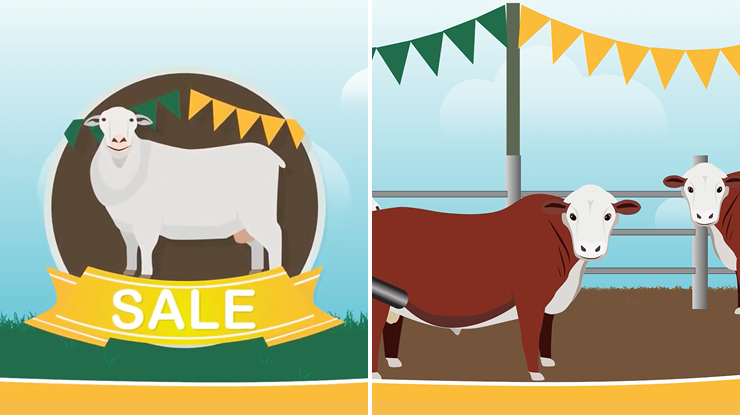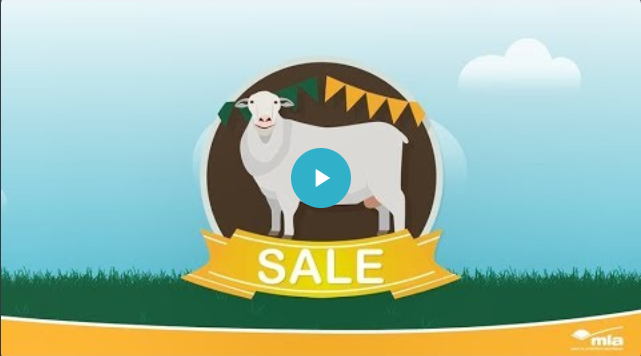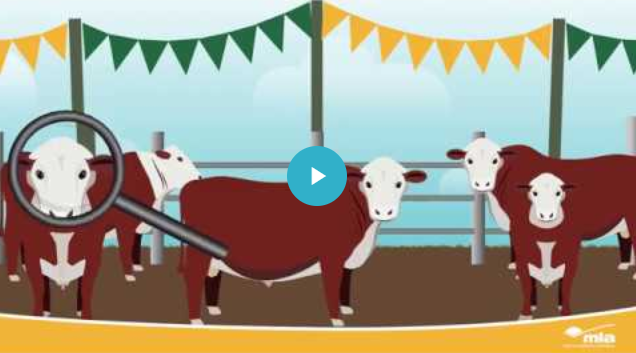
Shopping for a high-performing sire? What to do before the sire sale
There’s no doubt that a high-performing sire must be structurally sound, have good temperament and be reproductively fit. But what you can’t see about that sire is just as important.
Looking under his hood helps you build up a fuller picture of all the traits that he can pass on to his progeny – traits like fertility, carcase weight and eating quality.
When it’s time to pick your next high-performing sire, here’s a handy list of what to do before the sire sale, so you’re factoring in what you can and can’t see.
1. Identify or reassess your breeding objective.
A breeding objective describes what you’re trying to achieve with your herd or flock.
A high-performing sire is one who’ll help you meet your breeding objective, so make sure you know what your objective is.
MLA has produced short, animated videos on ‘How do I set a breeding objective?’ for tropical bulls, temperate bulls, prime lamb rams and Merino rams.
2. Identify the relevant selection index that aligns with your breeding objective.
Selection indexes assist in accurately selecting the sires that align to your breeding objective and your production system.
Once you know your breeding objective, work out what selection index closely aligns to it and your production system.
MLA has produced short, animated ‘What are indexes?’ videos for tropical bulls, temperate bulls, prime lamb rams and Merino rams.
3. Identify the relevant breeding values that align with your breeding objective.
Estimated Breeding Values (EBVs) and Australian Sheep Breeding Values (ASBVs) assist in accurately selecting the sires that align to your breeding objective and your production system. There are many traits to choose from, so your breeding objective will help you shortlist the traits of importance.
MLA has produced short, animated ‘What are breeding values?’ videos for tropical bulls, temperate bulls, prime lamb rams and Merino rams.
4. Search the printed sale catalogues and online BREEDPLAN and Sheep Genetics databases to find sires that match your desired indexes and breeding values.
You can use the databases and catalogues to help you filter out the animals that don’t meet your objectives and find the potential high-performing sires to purchase.
If your stud reports breeding values, you should be able to find the information in their printed sale catalogue.
For sheep, you can also find indexes and breeding values by searching the online Sheep Genetics database or RamSelect. For cattle, you can search the online BREEDPLAN databases, which can also be accessed through the breed society websites.
These online databases give you the ability to search animals within a catalogue or across all animals in the database. The search results allow you to compare and sort animals for their indexes and the EBV or ASBV traits you’re interested in.
MLA has produced short, animated videos for finding tropical bulls and temperate bulls on BREEDPLAN, and prime lamb rams and Merino rams on the Sheep Genetics website.
5. Contact the stud to gain more information about the sires and the stud’s breeding program.
If you’ve identified some sires you’re interested in at a particular stud, it’s best to contact the stud directly to gain a clearer insight into their breeding objectives, the traits they’re recording, sire and dam history, joining periods and other management, including vaccination history and whether they meet your biosecurity requirements. For bulls, you can also ask whether sale bulls have a BULLCHECK certificate available.
6. Develop a primary list of potential sires to purchase from the sale.
Choose your top sires that meet your breeding objective.
Use the relevant index first to rank and narrow down the available sires in priority order, then use the breeding values identified in your breeding objective to create a shortlist of sires to view on sale day.
7. Develop a secondary list of potential sires.
Always have a second-tier group, in case the sires on your primary shortlist aren’t structurally sound or sell above your budgeted price. This is especially important if you’re looking for more than one sire.
8. Decide on your budget.
Sale day may be competitive so decide how much you would like to spend when you’re at home, away from the sale and pressure of other bidders. A high-performing sire will provide greater productivity to your herd so it is important to decide what that is worth. A dollar index indicates the net profit per female joined.
Doing your homework now and objectively selecting sires by their breeding values and indexes means you can focus on the sires’ physical characteristics on sale day.
More information:
MLA has developed short, animated videos on how to shop for a high-performing sire at its new genetics hub:
- How do I shop for a high-performing prime lamb ram? video
- How do I shop for a high-performing Merino ram? video

- How do I shop for a high-performing tropical bull? video
- How do I shop for a high-performing temperate bull? Video




